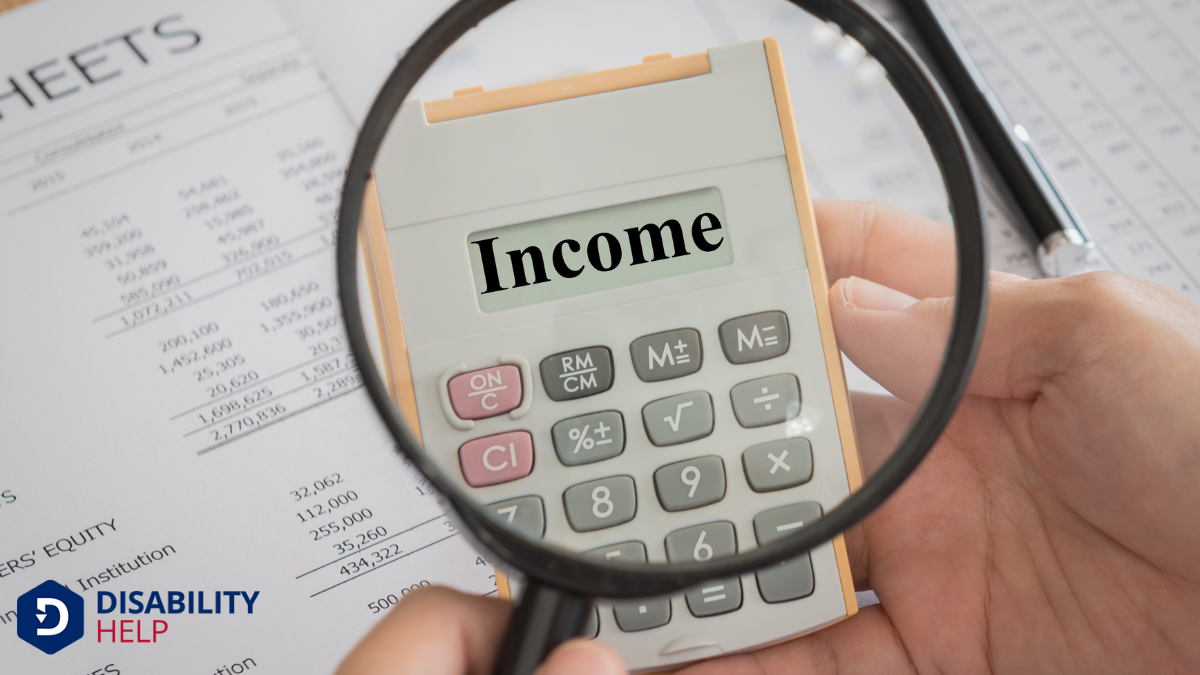When we talk about the highest disability payment, we're diving into a complex world of benefits that can vary considerably based on individual circumstances. It's crucial to understand the differences between Social Security Disability Insurance (SSDI)A U.S. government program that provides financial assistance to individuals who are unable to work d... and Supplemental Security Income (SSI) to grasp how maximum payments are determined. With factors like work history and income influencing these payments, there's a lot more to uncover about how one might maximize their disability benefitsFinancial assistance provided to individuals who are unable to work due to a disability, such as Soc....
Key Takeaways
- The highest monthly SSDI payment for 2023 is up to $3,627, based on lifetime earnings.
- Maximum SSI payment for 2023 is $914 for individuals and $1,371 for couples, varying by state supplements.
- Benefits depend on work credits and earnings history for SSDI, and income/resource limits for SSI.
- Cost-of-Living Adjustments (COLA) impact both SSDI and SSI payments annually.
- State-specific programs and additional benefits can increase overall disability payments.
Understanding Disability Benefits
Disability benefits can seem complex, but understanding them is essential for anyone traversing this important support system.
As we explore this topic, we realize that disability benefits are a significant lifeline for individuals unable to work due to medical conditions. They provide financial assistance and support, helping us meet basic needs when our ability to earn is compromised.
We often wonder about the eligibility criteria, the application process, and the types of benefits available. Managing through these questions can feel overwhelming, but breaking down each component helps.
We must familiarize ourselves with different programs and requirements, ensuring we can effectively access the aid necessary.
Let’s empower ourselves by gaining a clear understanding of how these benefits can support our journey.
Social Security Disability Insurance (SSDI) Overview

Let's explore Social Security Disability InsuranceA form of insurance that provides income to individuals who are unable to work due to a disability. (SSDI) to better understand how we can qualify for these benefits, how they're calculated, and what the maximum monthly payment might be.
We'll focus on the eligibility criteria and the key factors that influence the benefit amount we might receive.
SSDI Eligibility Requirements
While maneuvering through the complexities of Social Security Disability Insurance (SSDI), understanding the eligibility requirements is vital for those seeking benefits.
First, we must ascertain that our condition meets the Social Security Administration's (SSA) definition of disability. This means our condition should be severe enough to prevent us from engaging in substantial gainful activity (SGA) and is expected to last at least one year or result in death.
Additionally, we've got to have enough work credits accumulated through our earnings history. The number of credits needed depends on our age when we became disabled. It's imperative that we keep track of these credits as they play a significant role in determining our eligibility.
Together, let's make sure we're informed and prepared for this process.
Benefit Calculation Factors
Understanding the eligibility requirements gives us a foundation to explore how benefits are calculated under SSDI.
Our benefits primarily depend on our average lifetime earnings before our disability began. The Social Security Administration (SSA) uses a formula called the Average Indexed Monthly Earnings (AIME) to determine our benefits.
Fundamentally, they adjust our past earnings for inflation and average them over our working years. Then, they apply another calculation called the Primary Insurance Amount (PIA), which translates these average earnings into our monthly benefit.
It's vital for us to understand that our benefits aren't based on the severity of our disability or our current income.
Instead, the key factor lies in our work history and the contributions we've made to Social Security over the years.
Maximum Monthly Payment
The highest monthly payment one can receive from Social Security Disability Insurance (SSDI) hinges on several factors, primarily the individual's lifetime earnings.
Our collective understanding begins with the realization that SSDI doesn't offer a fixed amount; instead, it's calculated based on the average of our highest-earning years. What this means is that those who've had higher lifetime earnings contribute more into the system and, consequently, are eligible for larger benefits.
Currently, the maximum monthly SSDI payment is designed to reflect that contribution, reaching up to $3,627 in 2023. This figure represents the upper bound for those who've consistently earned at the maximum taxable income level.
Understanding these elements helps us grasp how our work history and earnings impact the support we receive from SSDI.
Supplemental Security Income (SSI) Explained
Let's explore Supplemental Security Income (SSI) by looking at who qualifies, how payments are calculated, and the maximum benefits available.
We'll break down the eligibility criteria, which focus on financial need rather than work history.
Understanding these aspects will help us navigate the SSI program effectively.
Eligibility Criteria for SSI
When we explore the eligibility criteria for Supplemental Security Income (SSI), it’s essential to understand the basic requirements that determine if someone qualifies for this program.
SSI provides financial assistance to individuals who've limited income and resources. Let’s break down the key factors:
- Age or Disability: Applicants must be aged 65 or older, blind, or disabled.
- Income Limits: There are strict income limits, which include wages, pensions, and other benefits.
- Resource Limits: Countable resources like cash, bank accounts, and property mustn't exceed specific limits.
- Citizenship: Applicants must be U.S. citizens or meet certain non-citizen requirements.
- Residency: Applicants must reside in one of the 50 states, the District of Columbia, or the Northern Mariana Islands.
These criteria guarantee that SSI helps those most in need.
SSI Payment Calculation
Although SSI payment calculation might seem complex, understanding its core components can simplify the process. Let’s break it down together.
SSI payments are determined primarily by the federal benefit rate (FBR), which is the basic monthly amount set by the government. From this, we subtract any countable income you might have. Countable income includes wages, pensions, and certain other financial sources. The idea is to guarantee the support provided meets individual needs without exceeding financial eligibility limits.
Additionally, states may offer supplementary payments, which can increase the overall amount we receive. However, these vary widely, so it's essential to check local regulations.
Maximum SSI Benefits
Understanding how SSI payments are calculated sets the stage for exploring the highest possible benefits one can receive through the program.
Let’s break down what determines the maximum SSI benefits.
- Federal Benefit Rate (FBR): This is the baseline amount, which the government adjusts annually.
- Income Factors: Countable income can reduce benefits, so we need to take into account all sources.
- Living Arrangements: Where and with whom we live can affect the amount we receive.
- State Supplements: Some states add to the federal payment, increasing the total benefit.
- Eligibility Criteria: Meeting the financial and medical requirements is vital for maximum benefits.
Factors Affecting Disability Payments
Several elements determine the amount of disability payments one might receive, and understanding them can be vital for financial planning.
First, our income level plays a significant role. Higher earnings typically result in higher payments, as they're based on our average lifetime earnings.
Additionally, the nature and severity of our disability impact the benefits. More severe disabilities may qualify us for higher payments.
Age can also be a factor; older individuals might receive different benefits than younger ones.
Furthermore, our work history is essential since a longer work history usually means higher payments.
Finally, geographical location can affect the amount due to differing cost-of-living adjustments.
Calculating Maximum SSDI Payments

To calculate the maximum Social Security Disability Insurance (SSDI) payments, we first need to understand the primary factors involved.
These factors help determine not just eligibility but also the amount we can receive. Let's explore these key components:
- Average Indexed Monthly Earnings (AIME): Our past earnings adjusted for inflation form the base.
- Primary Insurance Amount (PIA): This is calculated using our AIME, and it's pivotal in determining our monthly benefit.
- Age at Disability: Starting benefits at different ages can impact the final amount.
- Cost-of-Living Adjustments (COLA): These annual adjustments help keep up with inflation.
- Maximum Family Benefit: The total family benefit can't exceed a certain percentage of the worker’s PIA.
Understanding these elements guarantees we're well-informed about our potential SSDI benefits.
Determining the Highest SSI Payments
Although calculating Supplemental Security Income (SSI) payments might seem complex, it's essential for us to grasp the main criteria that influence these benefits.
SSI payments primarily depend on federal and state guidelines. The federal benefit rate, which adjusts annually based on living costs, forms the foundation of our payments. In 2023, the maximum federal amount is $914 for individuals and $1,371 for couples.
However, our actual payments might vary if we receive additional state supplements or have other income sources. The Social Security Administration reduces our payment by the countable income we report.
It's vital to understand that SSI is needs-based, so our assets, living arrangements, and additional resources also impact what we receive. By understanding these elements, we can better determine our SSI benefits.
Impact of Work History on SSDI
When we talk about the impact of work history on Social Security Disability Insurance (SSDI), it’s essential to understand how our past employment affects eligibility and benefit amounts.
The amount of SSDI we receive depends greatly on our work history. Our past employment determines both the eligibility for SSDI and the amount we’re entitled to receive.
Here are some key factors:
- Work Credits: We earn credits based on yearly income.
- Earnings Record: Higher lifetime earnings can result in higher benefits.
- Type of Work: Some jobs contribute differently to Social Security.
- Duration of Work: Longer work history may increase SSDI benefits.
- Time Since Work: Recent work history can affect eligibility.
Understanding these elements helps us navigate SSDI effectively, ensuring we receive the benefits we deserve.
Influence of Household Income on SSI

Household income plays an essential role in determining eligibility and benefit amounts for Supplemental Security Income (SSI). When we apply for SSI, our household income is closely examined because SSI is a needs-based program.
The Social Security Administration considers not just our income, but also our spouse's, if we're married. They factor in wages, pensions, and even some gifts. If our combined income exceeds a certain threshold, we mightn't qualify, or our benefits could be reduced.
Understanding these financial guidelines helps us better navigate the application process and set realistic expectations. We should also be aware that certain types of income, like food stamps, don't count against us.
It’s vital to gather accurate information and be transparent to guarantee we receive the appropriate support.
Strategies to Maximize Your Disability Payment
Steering through the complexities of household income and its impact on SSI eligibility sets the stage for us to explore effective strategies to maximize our disability payments.
By understanding these strategies, we can guarantee we’re making the most of our benefits. Let’s plunge into some actionable steps we can take:
- Accurate Reporting: Always report changes in income or living arrangements promptly to avoid overpayments.
- Explore Additional Benefits: Check for state-specific programs that might complement our SSI or SSDI.
- Utilize Work IncentivesPrograms or policies that encourage individuals with disabilities to enter or remain in the workforc...: Take advantage of Social Security’s work incentive programs to increase income without reducing benefits.
- Regular Reviews: Keep our medical records updated to guarantee continued eligibility.
- Financial Planning: Seek advice on managing assets to remain within eligibility limits.
With these strategies, we can optimize our disability payments effectively.
Reviewing and Adjusting Your Benefits
Let's take a closer look at how we can guarantee our disability benefits are optimized.
We should regularly review any changes in eligibility criteria and understand the reassessment process to stay informed.
Eligibility Criteria Changes
As we navigate the complexities of disability benefits, understanding recent changes in eligibility criteria is essential to ensuring we receive the maximum support available.
We must stay informed about adjustments that could affect our benefits. These changes can impact various aspects of eligibility, and it’s vital we understand where we stand.
Here are some key points to reflect on:
- Income Thresholds: Adjustments may alter the maximum allowable income.
- Medical Evaluations: Updates in required documentation or evaluation processes.
- Age Criteria: Changes could affect the age at which benefits apply.
- Benefit Duration: Modifications might influence how long benefits are available.
- Work Requirements: Alterations in work history or contribution stipulations.
Reassessment Process Overview
Understanding the eligibility criteria changes is just one part of guaranteeing we receive the highest disability payment possible.
Equally important is engaging in the reassessment process. This involves reviewing our current benefits to confirm they accurately reflect our needs and circumstances. Changes in our health or life situation may necessitate adjustments.
We should gather the necessary documentation and medical records that could support our case during reassessment.
Communication with our benefits administrator is essential. We can schedule a review meeting to discuss any modifications required. This proactive approach helps us stay informed and guarantees our benefits align with our current situation.
Remember, keeping records updated and maintaining open dialogue with the administration can greatly impact the support we receive.
Let's guarantee we’re receiving what we truly deserve.
Maximizing Benefit Amount
To guarantee we're maximizing our disability benefits, we must actively review and adjust our current payment structure.
Regular evaluations can help us identify opportunities for improvement and ascertain we're receiving the highest possible amounts.
Here are some strategies to take into account:
- Review Eligibility: Confirm we're still eligible for all benefits we're receiving.
- Update Records: Report any changes in our financial or medical status promptly.
- Seek Professional Guidance: Consult with a benefits advisor who can offer personalized advice.
- Utilize Online Tools: Use calculators and resources available on official websites to estimate potential benefits.
- Stay Informed: Keep up with policy changes that might affect our benefits.
Conclusion
In summary, we’ve explored the ins and outs of disability benefits, focusing on SSDI and SSI. It’s clear that understanding how work history, income, and other factors influence your payments is essential. By staying informed and proactive, we can better navigate the system and potentially maximize our benefits. Let’s continue to review and adjust our plans as needed, ensuring we’re making the most of the support available to us.






